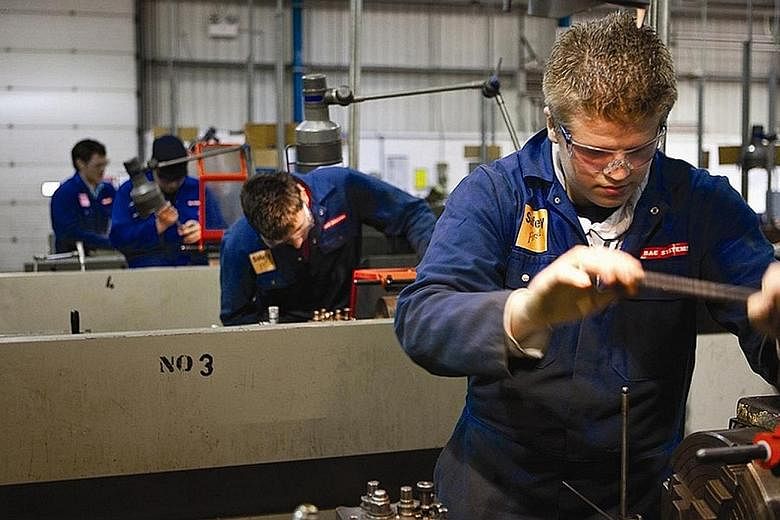LONDON • BAE Systems' new boss will cut around 2,000 jobs at Britain's biggest defence contractor to tackle dwindling orders for the Typhoon fighter jet and the loss of revenue from Cold War-era aircraft nearing retirement.
The Eurofighter Typhoon has won fewer orders this year than rivals such as the Rafale built by France's Dassault Aviation, and BAE is slowing production while it waits for Qatar to confirm its intention to buy 24 of the jets.
A bigger order expected from Saudi Arabia has not materialised.
The aircraft is the most important in BAE's portfolio, accounting for nearly a third of its air unit's sales last year.
Chief executive Charles Woodburn, who took the top job in July after 15 months as chief operating officer, said BAE had to align its workforce capacity more closely with near-term demand and become more competitive to secure new business.
"Those actions are necessary and the right thing to do for our company, but unfortunately include proposed redundancies at a number of operations," he said on Tuesday.
The looming loss of skilled manufacturing jobs and the potential ripple effect on the regions affected caused concern among politicians and unions.
Business minister Claire Perry said she would work with BAE to keep compulsory redundancies to a minimum.
"The company assures us that reductions can be managed on a voluntary basis as far as possible," she told lawmakers.
She said BAE was cutting the jobs to improve the efficiency of its operations.
UK-based defence analyst Francis Tusa said BAE was facing a double squeeze from confirmed orders for Typhoons drying up and Cold War Tornado jets, for which BAE has lucrative support contracts, nearing retirement.
BAE said that based on current orders for the Typhoon, it needed to reduce the workforce at its sites in Warton and Samlesbury, northern England, where it makes parts for the aircraft, by 750.
Another 400 jobs will go in Brough, north-east England, where the company makes the Hawk training jet, it said. Qatar said last month it intended to buy six Hawks in addition to the Typhoons.
It is also winding down support for Britain's Tornados, which will be taken out of service in 2019, resulting in 245 job cuts at two Royal Air Force sites.
Britain's Unite union vowed to fight the "devastatingly short-sighted" job losses that it said would undermine the sovereign defence capability of one of the European Union's top two military powers.
BAE, which in previous guises has been the backbone of Britain's defence industry for decades, employs 34,600 people in the country out of its global workforce of 83,100.
REUTERS

